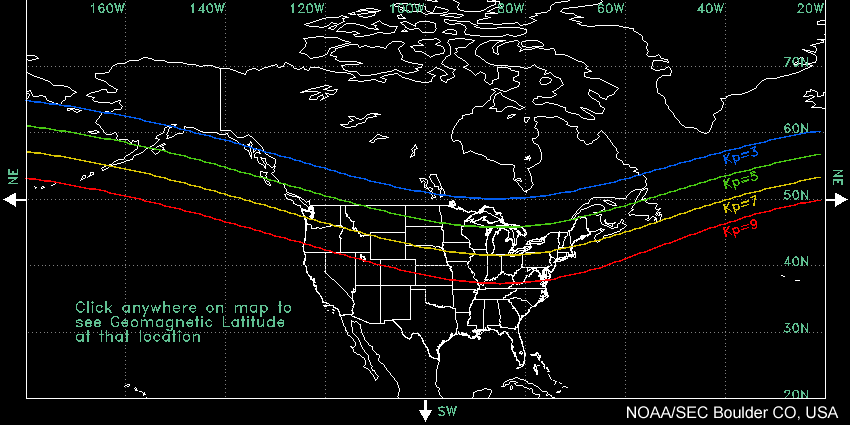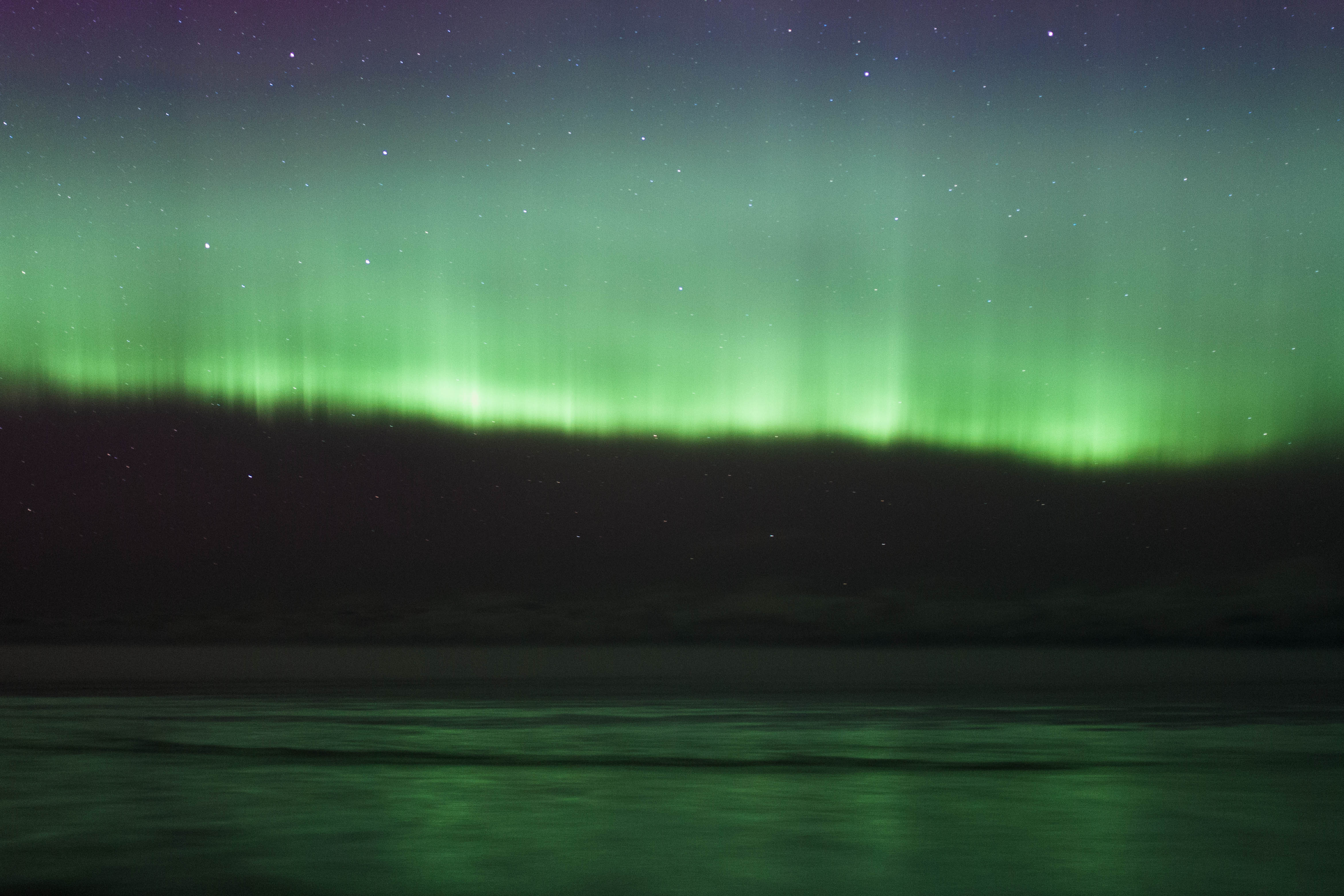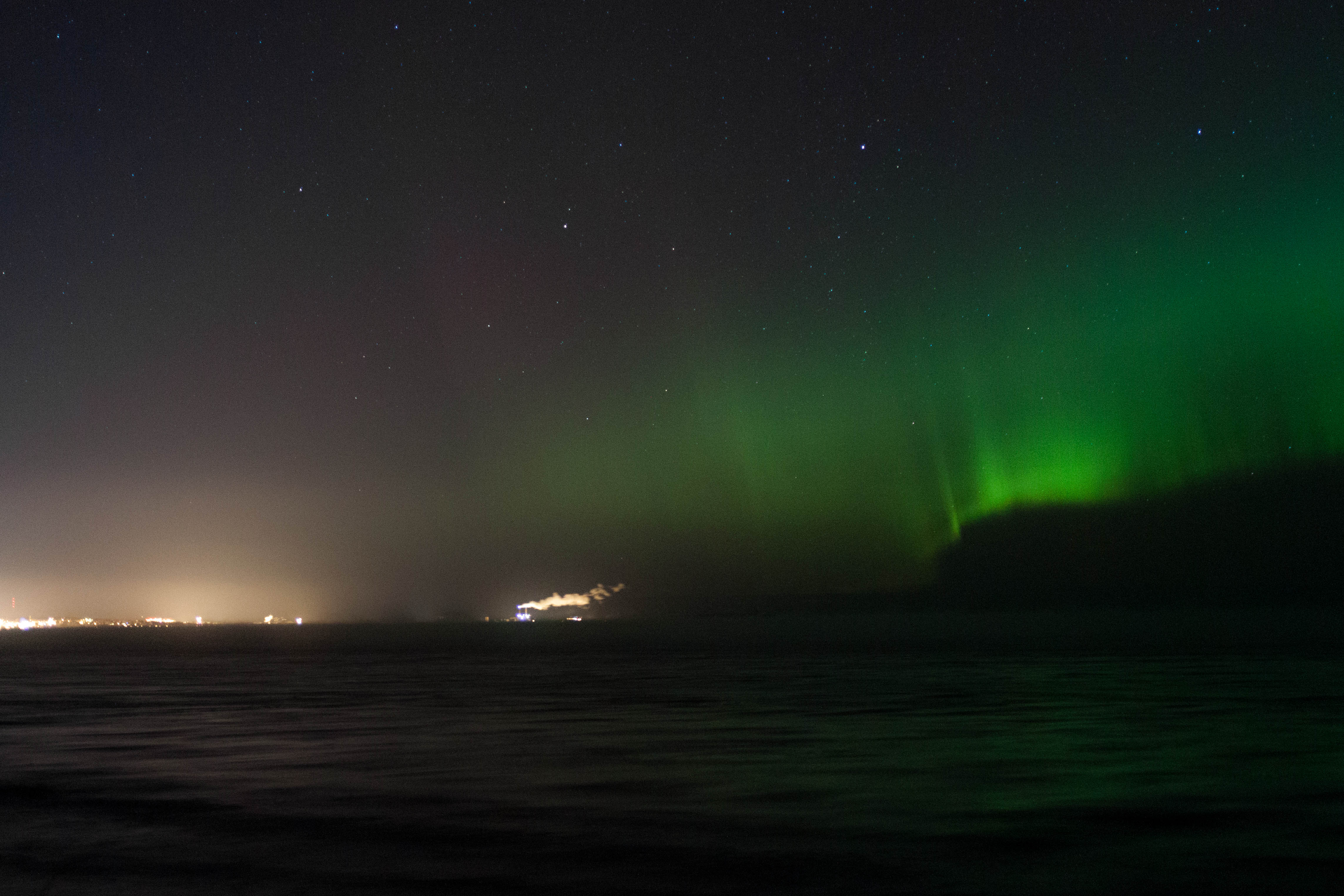Chasing Auroras in Michigan's Upper Peninsula
Have you seen the Northern Lights dancing across the starry skies? The U.P. offers a good opportunity for viewing Auroras. I want to share some tips for successful Aurora chasing.
Step 1: Kp Numbers
The Kp number refers to the strength of the Auroras. Auroras with Kp 5 and higher are considered storm level and can be seen farther south. Use the map below (from NOAA.gov) to find the Kp number needed for your area.

If your area is located between two lines, go with the lower line. The Kp numbers on the map are when the Auroras will be visible, but not necessarily bright. Keep in mind that Kp numbers are just an estimated measurement, and could be wrong.
For example, Marquette is sitting just on top of the Kp 5 line. At Kp 3, I have been able to capture greens and purples in the sky with long exposure photos. At Kp 4, I have been able to see color with the naked eye. At Kp 5 and higher, vivid colors and shapes become visible.
Visit softservenews.com to get an update on the current and predicted Kp number, as well as a great image of the current aurora oval.
Another great resource is @aurora_alerts tweets. Kp numbers 3 and up are tweeted by this account, as well as important information on upcoming storms. This can be set up to text your phone, or the Twitter app can alert you. These updates are useful for impromptu aurora chases and keeping track of activity while on the chase.
Step 2: Weather
Auroras are high up in the atmosphere, meaning weather can block them out. If clouds block your view of the stars, they also block your view of the Auroras.
The current phase of the moon will also make an impact. A full moon puts off a lot of light and can make faint Auroras even fainter. Don’t let a full moon deter you however, with strong enough Auroras it may add to the show.

Step 3: Location
Find a lot of open sky. Auroras will start in the north sky, and depending on strength can spill over your head into the southern sky. This makes standing at the south end of a lake or field most preferred. Anywhere along Lake Superior’s shoreline will provide brilliant reflections in the water.
Find the darkest place you can, away from street lights, neon signs, and other forms of light pollution is an absolute must. Placing a mountain between yourself and nearby towns, not climbing it, will block out a lot of light.
Turn off your flashlight, cellphone, headlights, etc. To preserve your night vision, use red light rather than white. You can color plastic wrap with red marker and wrap it over your flashlight for traveling.

Step 4: Wait
Chasing Auroras take a lot of patience, and preparation for disappointment. You could wait hours and only see a few minutes of dancing auroras or none at all. Often large storms are predicted that never arrive, or sudden shifts in weather can bring in cloud cover.
Try turning your Aurora chasing into a camping trip or overnight hike. The Yoop has many beautiful beaches and shoreline trails to explore. Spaceweather.com reports on all things happening beyond our atmosphere and often times Aurora storms are predicted days in advance, perfect for planning ahead.
Auroras favor the equinoxes. No one is really sure why. The best viewing season is from autumn to late spring. In most northern regions, even slightly affecting the Yoop, Summer’s arctic sun can wash out Auroras. However, great summer viewing is still possible with strong storms.
Remember to dress appropriately for lots of waiting. Pack some snacks, bring some friends. Maybe a chair, blanket, and banjo.
May the Auroras be ever in your favor.
Words and Photos by Heather Arpoika. Heather is a photographer, self-proclaimed boat nerd and lover of all things Upper Peninsula. She can be found on Twitter, Instagram, and the web. She is a graduate of NMU living in the Marquette.


